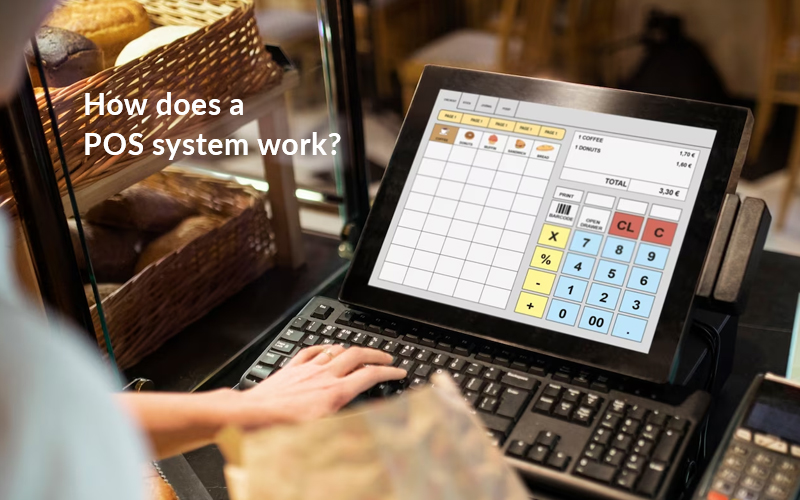
How does a POS system work?
A Point of Sale (POS) system is designed to facilitate and streamline the process of completing sales transactions. Here’s a general overview of how a POS system works:
Product Database:
The POS system has a database that contains information about the products or services offered by the business. This includes details such as product names, prices, and sometimes images or descriptions.
Transaction Initiation:
When a customer is ready to make a purchase, the sales associate or cashier uses the POS system to initiate a new transaction.
Product Scanning or Manual Entry:
Products are identified and added to the transaction through various means. This may involve scanning barcodes using a barcode scanner or manually entering product codes or names into the system.
Itemized Transaction:
The POS system itemizes the transaction, displaying a list of the products or services being purchased along with their quantities and prices. The running total is calculated in real-time.
Discounts and Promotions:
If applicable, the POS system allows the application of discounts, coupons, or promotions to adjust the total amount due.
Payment Processing:
Once the transaction is complete, the customer proceeds to payment. The POS system supports various payment methods, including cash, credit cards, debit cards, mobile payments, and sometimes checks or gift cards.
Payment Confirmation:
The POS system processes the payment and provides confirmation to the customer. This often includes printing a receipt, sending an electronic receipt via email or text, or both.
Inventory Management:
Simultaneously, the POS system updates the inventory levels in real-time. This helps businesses keep track of their stock, automatically adjusting quantities as items are sold.
Record Keeping:
The POS system maintains a record of each transaction, including details such as the date, time, items sold, payment method, and any discounts applied. This information is valuable for accounting and reporting purposes.
Integration with Other Systems:
– Many modern POS systems integrate with other business management tools, such as accounting software, customer relationship management (CRM) systems, and e-commerce platforms, ensuring a seamless flow of data across various aspects of the business.
Security Measures:
– To protect sensitive information, POS systems employ security measures, including encryption of payment data, user authentication, and compliance with industry standards such as the Payment Card Industry Data Security Standard (PCI DSS).
In summary, a POS system serves as a central hub for managing sales transactions, inventory, and related business processes, providing efficiency and accuracy in retail and hospitality environments.

